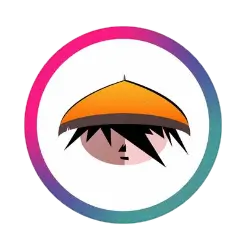10 Things That Drivers Should Know (Updated January 2016)
1. MMDA Enforcers are not allowed to group together while apprehending a motorist. They are not even allowed to stand together in groupsof two (2) or more, except in actual times of special operations (e.g. apprehending groups of smoke-belching/colorum buses).
2. Swerving is not a traffic violation per se. It is defined as a movement wherein vehicles shift from a lane to another. However, it can constitute the offense of reckless driving if it is done without precautions (e.g. swerving in an abrupt and careless manner, swerving without the use of signals, swerving across solid lines).
Swerving can also constitute the offense of Disregarding Traffic Signs if there are signs present that explicitly prohibit swerving in the area.A driver’s license cannot be confiscated by a Traffic Enforcer during traffic apprehensions except on the following situations:
3. A driver’s license cannot be confiscated by a Traffic Enforcer during traffic apprehensions except on the following situations:
1. The driver was involved in a traffic accident
2. The driver has accumulated three (3) or more unsettled violations
3. The driver has been apprehended for the following violations:
- Allowing another person to use driver’s license
- Broken sealing wire
- Broken taximeter seal
- Colorum operation (cargo/passenger vehicle)
- Driving against traffic
- Fake driver’s license
- Fake/altered taximeter seal
- Fake/altered sealing wire
- Fast/defective/non-operational/tampered taxi meter
- Flagged up meter
- Illegal or unauthorized counter-flow
- Illegal transfer of plates/tags/stickers
- Joined/reconnected sealing wire
- No driver’s ID
- Ignoring Organized Bus Route (OBR) interval timers (for 2nd offense)
- Skipping or bypassing designated OBR terminals or loading bays (for 2nd offense)
- Operating on contractual basis
- Out of line operation
- Overcharging (with or without conductor) (for the 2nd offense)
- Overspeeding
- Refusal to convey passengers to destination/trip-cutting (Taxis and Public Utility Vehicles)
- Refusal to render service to public (Taxis and Public Utility Vehicles)
- Tampered sealing wire
- Tampered taximeter seal
- Tampering of OR/CR/CPC & other documents (spurious documents)
- Undue preference/unjust discrimination
- Using motor vehicle in commission of crime
The above-mentioned administrative violations also require a minimum of 2 hours seminar (for the drivers) at the Traffic Academy.
However, any driver who has committed three (3) or more unpaid violations, whether administrative or moving, shall also be subject to attending seminars, whose length shall be based on the results of the diagnostic exam (exam that will determine the contents of the seminar progress), which will be administered by the Agency.
*Note: If the license is to be confiscated, the Traffic Enforcer should inform the driver of the reason/s for the confiscation and the ticket validity.
If the driver refuses to surrender his driver’s license, his plate may be detached pursuant to Section 74 & 75, MC 89-105.
4. Private Vehicles are not allowed to use the yellow lane except when they are about to turn – provided that they start shifting lanes upon seeing the transition lane (broken white lines painted diagonally), that you can see around 50 meters away from an intersection. However, selective apprehension of private vehicles using the yellow lane is highly prohibited.The yellow lanes (1st and 2nd lanes in EDSA) are only for City Buses. City Buses are not allowed to go beyond the yellow lanes. If they do so, they will be apprehended for violating the yellow lane policy.
Provincial buses are also not allowed to use the yellow lane. Instead, they are encouraged to use the third lane.
5. Each Traffic Enforcer has his/her own written mission order issued by the MMDA Central Admin. Apprehended drivers are free to ask for the apprehending officer’s mission order, which includes his area of responsibility, time of duty, official function. It also indicates whether or not the enforcer is authorized to issue tickets.
6. Traffic Enforcers should issue TVR in complete uniform, with visible nameplates. Traffic Enforcers are instructed to accomplish the TVR (Traffic Violation Receipt) without any delay or argument on the road, so as to avoid traffic congestion.
7. The Apprehending Enforcer is allowed to issue another TVR for Towing Fee. If the owner of the impounded vehicle fails to release his vehicle after payment of fine in the stipulated date, the impounding officer shall issue a separate TVR indicating no. of days it has remained at the impounding area.
8. Before apprehending, the Traffic Enforcer should flag down the vehicle and lead it to the roadside where it will not obstruct the flow of traffic. Traffic Enforcers should courteously inform the driver of his violation.
9. Traffic Enforcers are not allowed to ask drivers to alight from their vehicles while the apprehension is taking place. Most importantly, Traffic Enforcers are not allowed to ask or receive bribe money.
10. During traffic apprehensions, the following can be considered as a valid driver’s license:
- ID Plastic Card
- DLR / Temporary Driver’s License
- TOP (Temporary Operator’s Permit)
- International Driver’s License
- Foreign License
The Traffic Enforcer should exercise extra diligence in verifying the veracity of the data or documents presented.
If you encounter any Traffic Enforcer violating any of these, get the name of the Traffic Enforcer indicated on his/her name plate, and submit a letter of complaint addressed to the Traffic Adjudication Board (TAB), MMDA Bldg. EDSA cor. Orense St. Guadalupe Nuevo, Makati City, within 5 days after the apprehension.
In case you are involved in an argument with a Traffic Enforcer, call the MMDA Hotline 136, or the Metrobase at 0917-527-7304. Ask the Metrobase to send inspectors to go to the place where the argument is taking place for proper investigation.
Source: mmda.gov.ph
















![[LOOK] FHM Sexiest List: Jennylyn Mercado #1, Kathryn Bernardo #2](https://i0.wp.com/all-about-juan.info/wp-content/uploads/2016/01/FHM-Sexiest-List.jpg?fit=720%2C1115&ssl=1&resize=200%2C200)



![[WATCH] Disturbing video of a P.E. class gone viral!](https://i0.wp.com/all-about-juan.info/wp-content/uploads/2015/09/disturbing-PE-class-video.jpg?fit=843%2C391&ssl=1&resize=200%2C200)
![[WATCH] Compilation of Magandang Gabi Bayan's Halloween Special Episodes!](https://i0.wp.com/all-about-juan.info/wp-content/uploads/2015/10/magandang-gabi-bayan-halloween-scpecial.jpg?fit=687%2C475&ssl=1&resize=200%2C200)
![[WATCH] Behind-the-scenes video clip of Dennis Trillo in swimming trunks makes everyone going CRAZY!](https://i0.wp.com/all-about-juan.info/wp-content/uploads/2016/10/Behind-the-scenes-video-clip-of-Dennis-Trillo-in-swimming-trunks.jpg?fit=600%2C450&ssl=1&resize=200%2C200)








